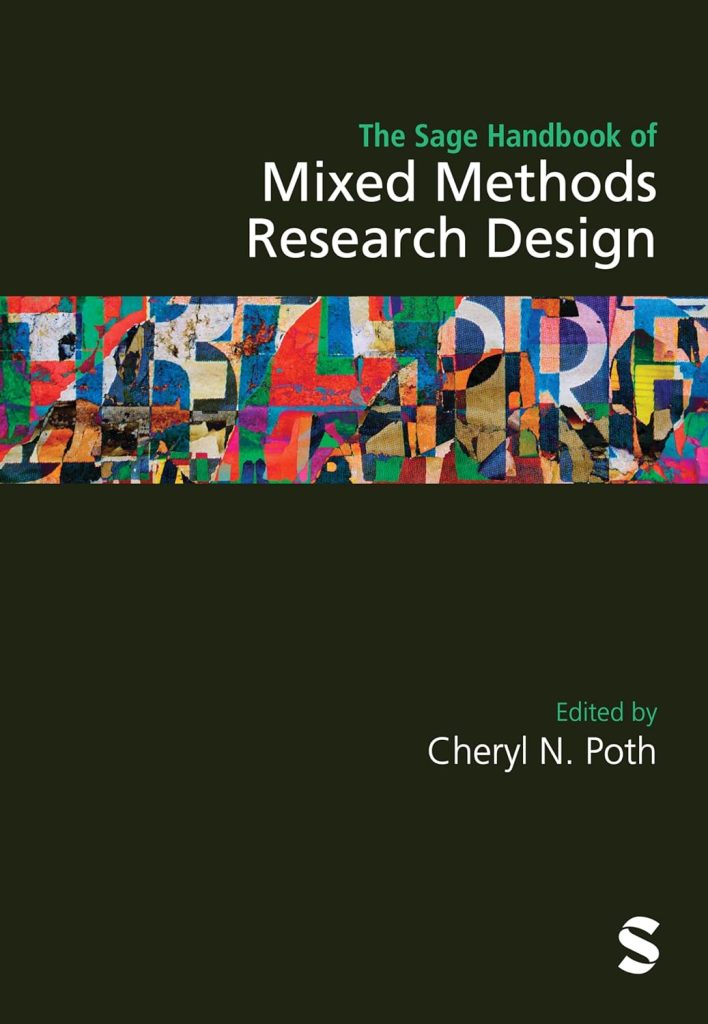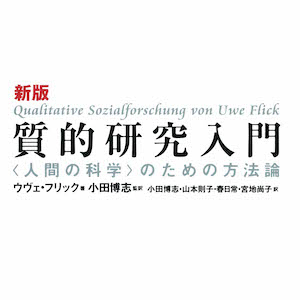The Sage Handbook of Mixed Methods Research Design
The Sage Handbook of Mixed Methods Research Design
Chaeryl N. Poth 編
言語: 英語
出版社: SAGE Publications Ltd.
ハードカバー: 568ページ
ISBN-10: 1529723965
ISBN-13: 978-1529723960
発売日: 2023/11/13
書籍内容
80人以上の著名な研究者や新進気鋭の研究者の投稿による本書は、混合研究法の最新の動向や変化に興味を持つ方々にとって、必須のリソースです。
既存の混合研究法のデザインに新たな応用や革新的な取り組みを探求することで、本書は包括的な統合の指針を提供し、デザインの革新がこれまでに未研究だった社会問題や人々の調査にどのようにインスピレーションを与えるかを示しています。混合研究法が適用されるさまざまな文脈とデザインに焦点を当て、本書は研究者たちが将来の研究を行う際の変化に備えることを支援します。初心者からベテランの混合研究法の研究者まで、研究デザインにおける複雑さを理解し、創造的なアプローチを行うための手段として、本書は頼りになる存在です。わかりやすい言葉と具体的な例を交えながら、さまざまな役割や経験を持つ混合研究法の関係者に向けて執筆されています。
11人の国際的に名高い編集セクションのリーダーによって導かれる詳細な議論は、混合研究法の研究デザインの集合的な考えを未来に向けて6つのセクションで展望しています。
目次
- Dilemmas and Opportunities for Mixed Methods Research Design: Handbook Introduction
- Cheryl N. Poth
- Section 1: Inspiring Diversity and Innovation in Mixed Methods Design
- Evolving Tensions and Conversations in Mixed Methods Research Design Approaches: Section 1 Introduction
- Sergi Fàbregues and José F. Molina-Azorin
- Chapter 2: Revisiting Mixed Methods Research Designs Twenty Years Later
- John W. Creswell and Vicki L. Plano Clark
- Chapter 3: Mixed Methods Design in Historical Perspective: Implications for Researchers
- Joseph A Maxwell
- Chapter 4: Mixed Methods Designs to Further Social, Economic, and Environmental Justice
- Donna M. Mertens
- Chapter 5: Developments in Mixed Methods Designs: What Have Been the Dominant Pathways and Where Might They Take Us in the Future?
- Katrin Niglas
- Chapter 6: The Role of Methodological Paradigms for Dialogic Knowledge Production: Using a Conceptual Map of Discourse Development to Inform MMR Research Design
- Dawn Freshwater and Jane Cahill
- Future Tensions and Design Conversations in the Mixed Methods Field: Section 1 Conclusions
- José F. Molina-Azorin & Sergi Fàbregues
- Evolving Tensions and Conversations in Mixed Methods Research Design Approaches: Section 1 Introduction
- Section 2: The Craft of Mixed Methods Research Design
- The Craft of Mixed Methods Research Design: Section 2 Introduction
- Sophia L. Johnson and Judith Schoonenboom
- Chaper 7: Embracing Emergence in Mixed Methods Designs: Theoretical Foundations and Empirical Applications
- Manuela De Allegri and Julia Lohmann
- Chapter 8: The Methods-Inference Map: Visualizing the Interactions Between Methods and Inferences in Mixed Methods Research
- Judith Schoonenboom
- Chapter 9: Towards Sampling Designs that are Transparent, Rigorous, Ethical, and Equitable (TREE): Using a Tree Metaphor as a Sampling Meta-Framework in Mixed Methods Research
- Julie A. Corrigan and Anthony J. Onwuegbuzie
- Chapter 10: Data Integration as a Form of Integrated Mixed Analysis in Mixed Methods Research Designs
- Susanne Vogl
- Chapter 11: Ethical Issues and Practices for Mixed Methods Research in an Era of Big Data
- Roslyn Cameron and Heinz Herrmann
- Chapter 12: Building the Logic for an Integrated Methodology: Mixed Method Grounded Theory as an Example of Constructing a Methodology to Guide Design and Integration
- Elizabeth G. Creamer, Cherie D. Edwards, and Cassandra McCall
- The Craft of Mixed Methods Research Design: Section 2 Conclusions
- Judith Schoonenboom and Sophia L. Johnson
- The Craft of Mixed Methods Research Design: Section 2 Introduction
- Section 3: Expanding Mixed Methods Design Approaches
- Expanding Beyond Typology-Based Mixed Methods Designs: Section 3 Introduction
- Peggy Shannon-Baker and Jessica T. DeCuir-Gunby
- Chapter 13: Exploring Interlocking Relationships of Race, Gender, and Class with an Intersectionality-Informed Mixed Methods Research Design Framework
- Jenny Douglas
- Chapter 14: Indigenous Cultural Values Instrument Development: Using Mixed Methods Research
- Mehdi Taghipoorreyneh
- Chapter 15: What Can Mixed Methods Partnerships Learn from Kaupapa Maori Research Principles?
- Peter Rawlins, Philippa Butler, Spencer Lilley, and Maggie Hartnett
- Chapter 16: Prioritizing Cultural Responsiveness in Mixed Methods Research and Team Science with Underrepresented Communities
- Tera R. Jordan and Maya Bartel
- Chapter 17: Using Participatory Methods in Randomised Controlled Trials of Complex Interventions
- Jenevieve Mannell and Audrey Prost
- Chapter 18: Illustrating the Mixed Methods Phenomenological Approach (MMPR)
- Joanne Mayoh, Talia Thompson, and Shanlee Davis
- Chapter 19: Intersection of Mixed Methods and Case Study Research (MM+CSR): Two Design Options in Educational Research
- Loraine D. Cook and Vimala Judy Kamalodeen
- Chapter 20: Harnessing Mixed Methods for Research Instrument Development and Legitimation
- Vanessa Scherman and Lisa Zimmerman
- Chapter 21: Mixed Methods-Grounded Theory: Best Practices for Design and Implementation
- Michelle C. Howell Smith, Wayne A. Babchuk, and Timothy C. Guetterman
- Moving Beyond Tradition: The Need for Expanded and Culturally Relevant Mixed Methods Design Typologies: Section 3 Conclusions
- Jessica T. DeCuir-Gunby and Peggy Shannon-Baker
- Expanding Beyond Typology-Based Mixed Methods Designs: Section 3 Introduction
- Section 4: Designing Innovative Integrations with Technology
- Expanding Innovative Integrations with Technology: Section 4 Introduction
- Timothy C. Guetterman
- Chapter 22: Using Software for Innovative Integration in Mixed Methods Research: Joint Displays, Insights, and Inferences with MAXQDA
- Udo Kuckartz and Stefan Rädiker
- Chapter 23: Grounded Text Mining Approach: An Integration Strategy of Grounded Theory and Textual Data Mining
- Mitsuyuki Inaba and Hisako Kakai
- Chapter 24: A ‘Mixed Methods Way of Thinking’ in Game-based Research Integrations
- Lisbeth M. Brevik
- Chapter 25: Integrating Secondary Data from Ethnically and Racially Minoritized Groups in Mixed Methods Research
- Daphne C. Watkins and Natasha C. Johnson
- Chapter 26: Beyond the Joint Display in Mixed Methods Convergent Designs: A Case-Oriented Merged Analysis
- Carolina Bustamante
- Future Trends in Designing Innovative Integrations with Technology: Section 5 Conclusions
- Timothy Guetterman
- Expanding Innovative Integrations with Technology: Section 4 Introduction
- Section 5: Navigating Research Cultures in Mixed Methods Design
- From Margin to Center: The Design Implications of Cultural Component with Mixed Methods: Section 5 Introduction
- Elizabeth Creamer
- Chapter 27: Culturally Responsive Mixed Methods Evaluation Design
- Jori N. Hall and Ayesha S. Boyce
- Chapter 28: Integrating a Four-Step Japanese Cultural Narrative Framework, Ki-Shou-Ten-Ketsu, into a Mixed Methods Study
- Taichi Hatta
- Chapter 29: Leveraging Mixed Methods Community-based Participatory Research (MMCBPR) in Diverse Social and Cultural Contexts to Advance Health Equity
- P. Paul Chandanabhumma, Annika Agni, and Melissa DeJonckheere
- Chapter 30: Cultural Diversity in Intervention Designs: A Chinese Illustrative Example
- Hongling Chu, Xuejun Yin, and Huieming Liu
- Chapter 31: Examining the Influences of Spanish Research Culture in Systematic Observation with Mixed Methods
- M. Teresa Anguera, Eulàlia Arias-Pujol, Francisco Molinero, and Luca Del Giacco
- Future Directions for Research Cultures in Mixed Methods Designs: Section 5 Conclusions
- Elsa Lucia Escalante Barrios
- From Margin to Center: The Design Implications of Cultural Component with Mixed Methods: Section 5 Introduction
- Section 6: Exploring Design Possibilities and Challenges for Mixed Methods Research
- Exploring Possibilities and Challenges for Mixed Methods Research for the Future: Section 6 Introduction
- Peter Rawlins and Maggie Hartnett
- Chapter 32: Visualising the Process: Using Visuals to Teach and Learn Mixed Methods Research
- Peggy Shannon-Baker
- Chapter 33: Toward the Future Legitimacy of Mixed Methods Designs: Responsible Mixed Methods Research for Tackling Grand Challenges for the Betterment of Society
- José F. Molina-Azorin and Michael D. Fetters
- Chapter 34: Realizing Methodological Potentials and Advantages of Mixed Methods Research Design for Knowledge Translation
- Nataliya V. Ivankova, Jami L. Anderson, Ivan I. Herbey, Linda A. Roussel, and Daniel Kim
- Chapter 35: Opportunities and Challenges for a Transdisciplinary Mixed Methods Research Future
- Mandy M. Archibald
- Chapter 36: Mapping Design Trends and Evolving Directions Using the SAGE Handbook of Mixed Methods Research Design
- John Creswell, Cheryl N. Poth, and Peter Rawlins
- Where to Next in Exploring Possibilities and Challenges for Mixed Methods Research for the Future: Section 6 Conclusions
- Peter Rawlins and Maggie Hartnett
- Chapter 37: An Emerging and Exciting Future for Mixed Methods Research Design: Handbook Conclusions
- Cheryl N. Poth
- Exploring Possibilities and Challenges for Mixed Methods Research for the Future: Section 6 Introduction




